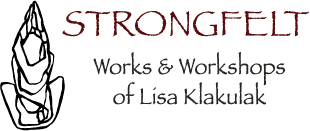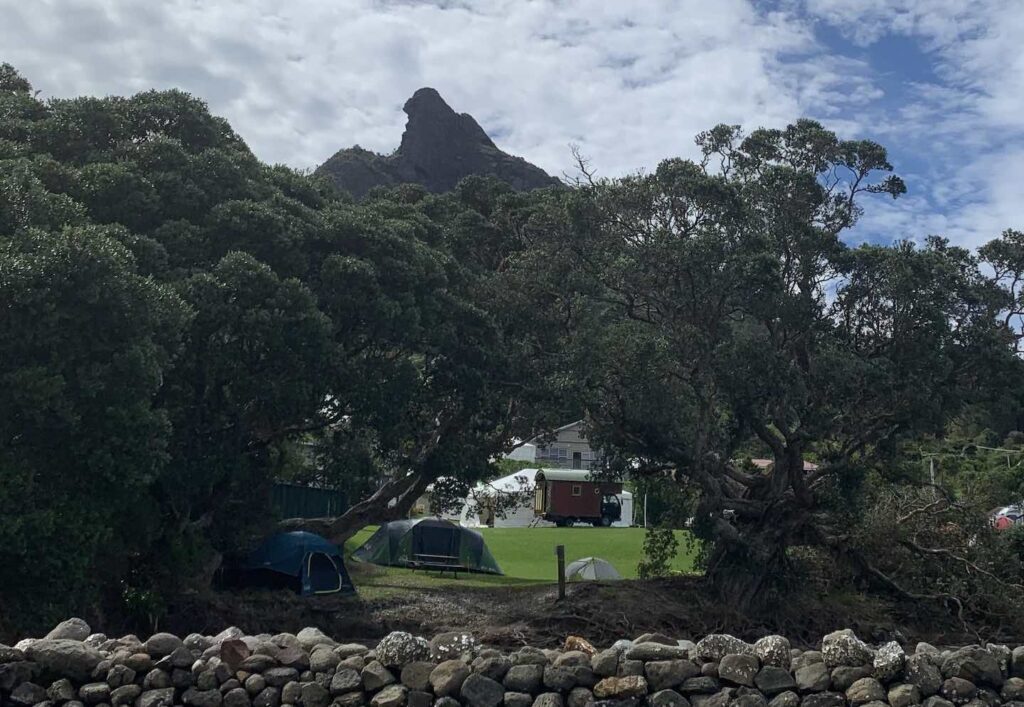I arrived at Whangarei Heads, the location of CollaboratioNZ, a day before it officially began as I was keen to lend a hand, stake out my tent site, see what all goes into the set up and to meet the committee members I had been corresponding with for the past year. Honest, I was also ready to get out of the hustle of Auckland’s city center and into the slower pulse of the remote Northland of New Zealand. Ha! So I thought! There were so many moving parts on the grounds and the electricity wasn’t even turned on yet! In just about 3 days, the Mt. Mania Baptist Camp was turned over into an adult art collaborative residency with a marquee for stone carving, ceramics, blacksmithing, fiber, glass, neon & 3D printing, mixed media, jewelry, print and wood working! Quite a feat on 3 different levels of terrain and yes, indeed, even a power hammer was brought to the site!
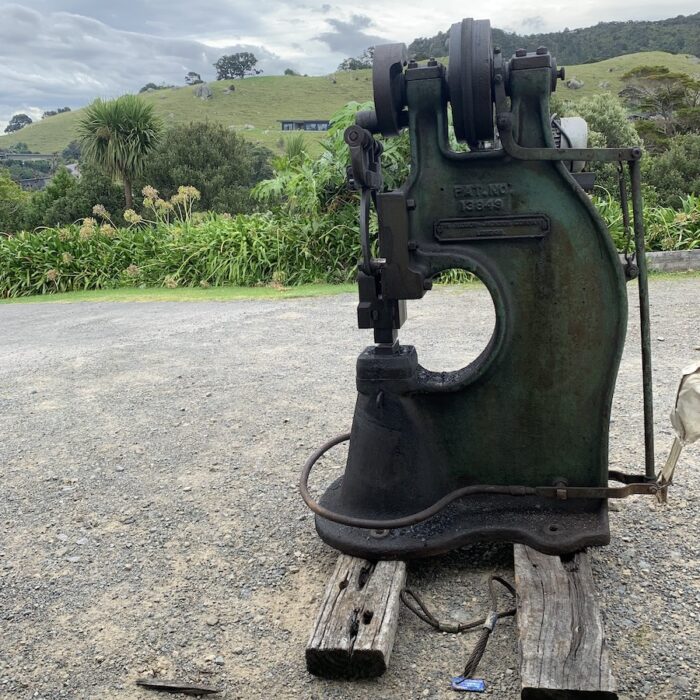
Collab began the first evening, March 10 with a ceremonial opening based on the Maori powhiri. The Collab welcoming involved those who had been participants for many years receiving those of us who were new to the event in the communal hall where we greeted one another, shared our first meal (and all those to follow) and viewed images of one anothers’ work. I appreciated this sharing of cultural perspective led by the Maori participants for our particular setting. Thank you.
Now the art making begins…
MANY WAYS TO COLLABORATE
One of the jobs I had during set-up or “mucking in” was to distribute resources from the main storage container to different media areas on the grounds. There was a cacophony of materials and found objects waiting to find harmony in the hands of makers. As someone who finds apt associations between my media of choice, felt (matted animal hair made into a skin-like substrate) and the human figure/experience, I picked up this barbie doll-like form and never put it down. The ridicule for the supposedly ideal proportions of the doll or the absurd, non-human color of the skin is nothing new. It was, however, the immobilization of the legs into a skirt, the alteration of the doll into a vessel and the placement of the opening to hold shampoo/soap (so I thought…it was actually full of talcum powder!), not to mention the headless or small featureless head that further perturbed. I had never seen one of these before and I decided to collab with this object to change the story by creating a new skin while also sharing with the Collab community the working of felt very thin into a hollow form that could be shrunk down over a form to reveal its contours, or in this case, structurally change them.
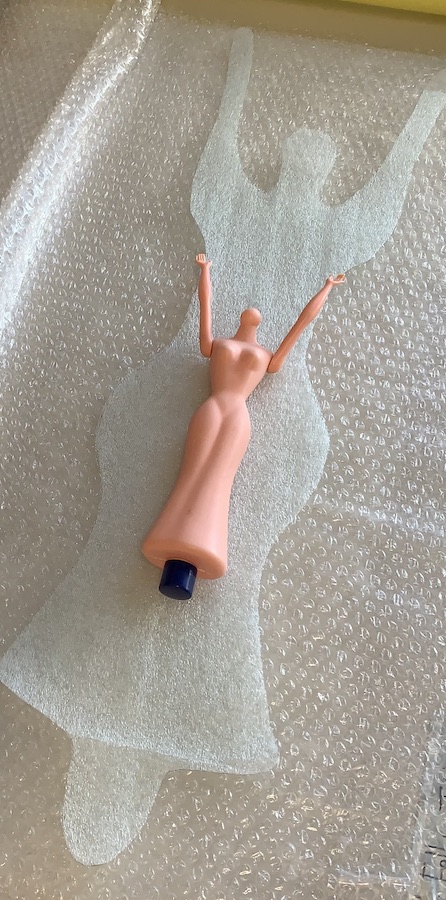
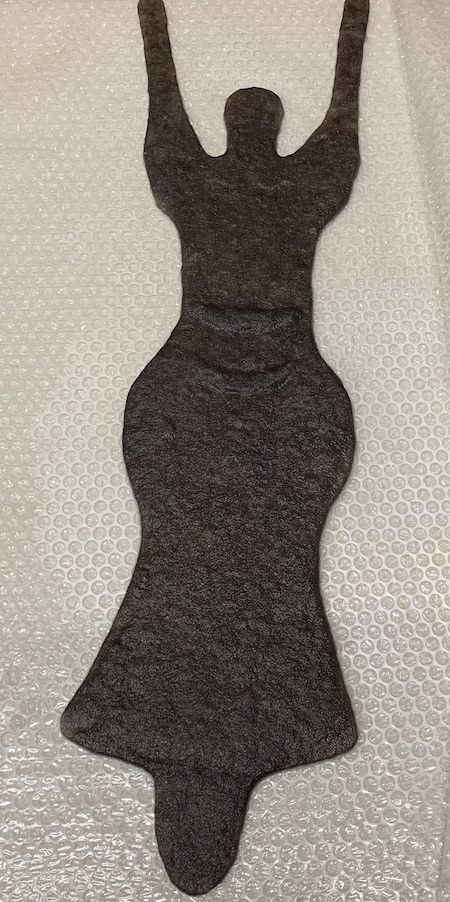
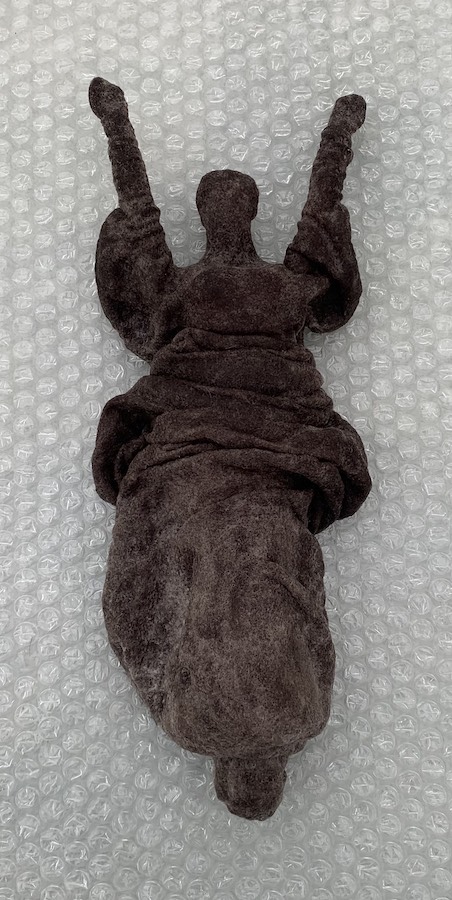
I set about with the mental and mathematical process of flattening the form into a 2D template that was enlarged to accomodate the amount of shrinkage I would achieve with the weight of wool I would envelope the template with. I had access to a beautiful natural color in a fine quick felting wool, which is ideal when working this thin, thanks to the efforts and connections of Collab committee member Wendy Naeplfin. I made some thicker sheets of felt that I had partially felted to a specific density allowing for shapes cut from it to retain their shape, but to also have enough shrinkage remaining that they would incorporate into the thinner skin. I added denser partial felt shapes to the figure’s lower belly (as you can see in the middle image above), to her upper arms and to her behind. I opted not to give her droopier or lopsided breasts, as I wanted the barbie doll figure to still be recognizable. I rolled the felt in bubble wrap to start the fibers integration, cut a hole to remove the template, slid the plastic form inside and stiched up the cut. I then began the process of sculpting the new form by directional agitation of these different weights of wool until the skin was snug against the plastic, the denser shapes in the right locations to create this new form.
On a side note, I’ve made a number of figurative works with felt using a variety of methods including encasing a baby doll form in a wool & silk skin and using this differential shrinkage method to sculpt a face, but I had never modified the form of a pre-existing body in such a manner. In the past few delirious days of jetlag, I came across some posting by Jason Freeny of @gummifetus who is also exploring the alteration of barbie doll forms. Maybe check that out if this idea interests you!
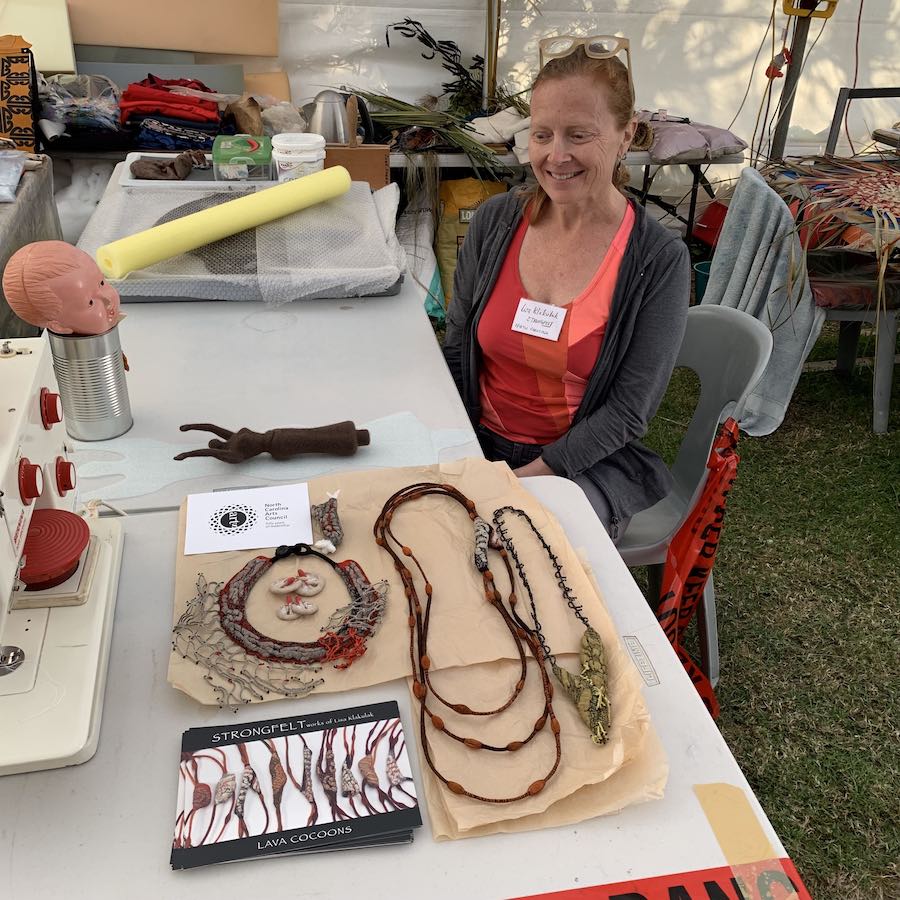
PUBLIC OPEN DAY
Collab began on a Friday evening and I managed to make samples of the wool I had access to, to get this felted figure finished and layout another template for what would become the figure’s head before the Public Open Day on the following Tuesday. We had a constant flow of visitors come through to see what we were making and perhaps set their eyes on pieces for the auction the following Saturday. Above, you can see the figure in front of me, a large doll head and the even larger prepared layout in my tray at the end of the table that I would be felting around that head during this 5 hour event. Also on my table, there are a few pieces I brought from home as examples of my work and in particular, pieces from a body of work I had made inspired by my last visit to the Pacific Islands when I was a guest workshop teacher for the Hawaii Craftsmen in 2017. And lastly, but prominently, I also displayed the logo of the North Carolina Arts Council that had awarded me an Artist Support Grant which in addition to the support from the CollaboratioNZ Trust made this trip possible. Thank you.
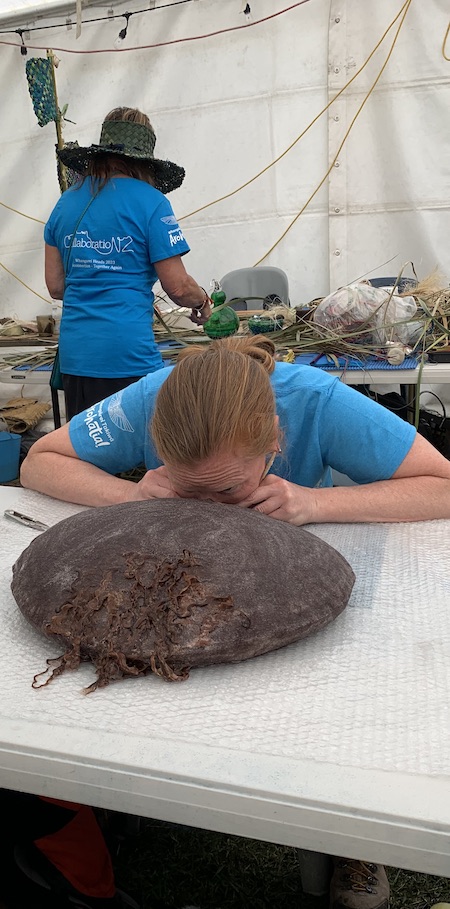
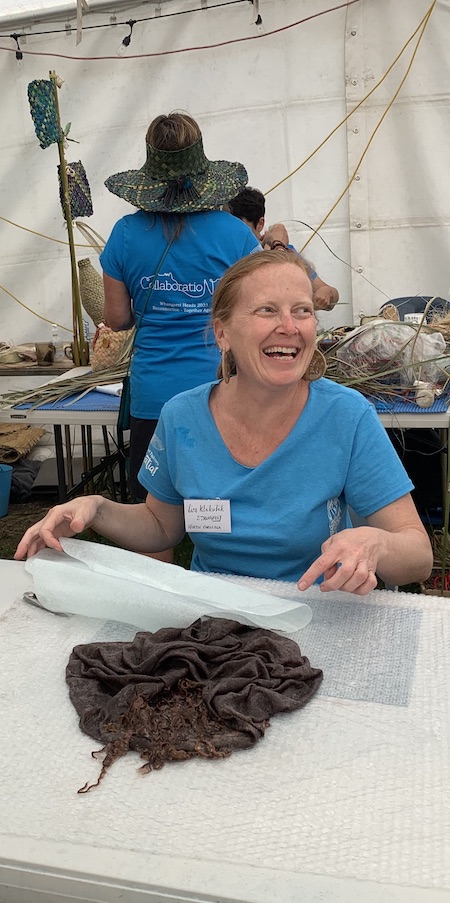
At this point in the Collab, having made connections with one another, seeing how others work and what materials they brought, the structure of this felted figure was about to change. Kath Batchelor, who works primarily with found objects, had quite the collection of doll parts and she offered up a big head of brains for the felted figure. I also had a chat with sisters Amy Lynch & Katie Baptiste, who work with repurposed colorful 44 gallon steel drums in their creative buisness, METcALfe. I was drawn to the color of their metal work and thought it would be an interesting and surprising contrast to the natural wool colors. I was thinking the figure needed some sort of mount or base and as she had a strata volcano shape, wouldn’t it be appropriate that her base be made from a container that holds the earth’s fuel? They were game for making her some sort of metal base and suggested the head of the felt figure have a mohawk. Perfect! I had found a stash of just enough copper colored locks on the fiber resource table to make a good representation of a fiery lava flow from her head.
A big thanks to fellow Collab artist Todd Sheridan who happened through the fiber tent at the ideal moment to document my inflation of the figure’s head in the images above. This helps loosen the felt from the surface of the resist to make it easier to pull it out of the small hole cut in the felt and well, it is also just fun to inflate things! Also, thanks to photographer Tania Whyte from the NZ Herald’s Northern Advocate who came by Collab for Public Open Day and captured 10 fab images of enthusiastic Collab artists rocking their blue shirts. Check out the article by following this link!
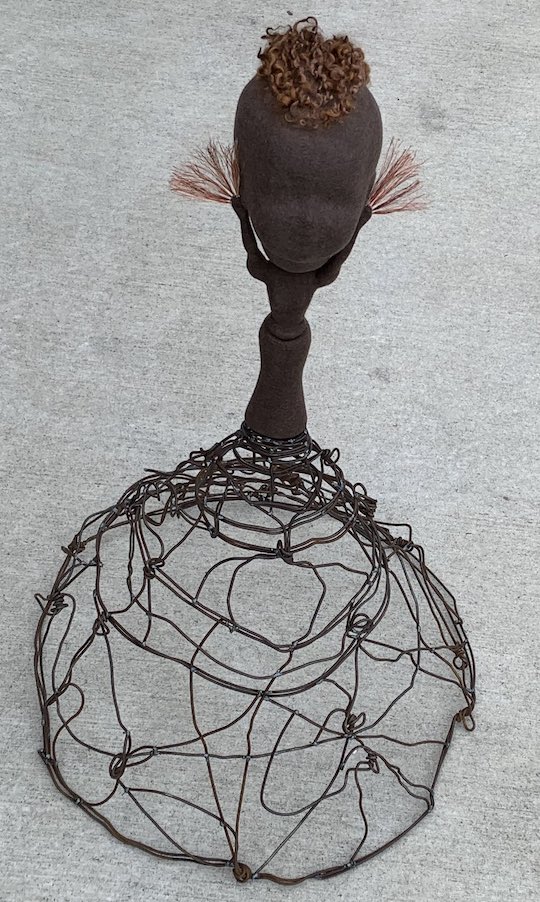
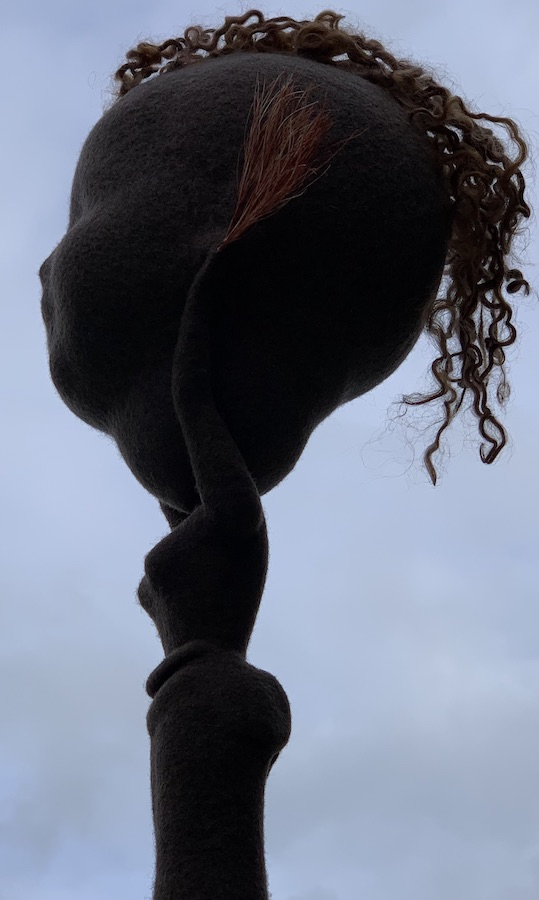
Amy & Katie began working on the figure’s base the next day and their vision was one of a more knarled appearance than I had originally envisioned from looking at their work. There are many ways to collab. Some people will ask for a specific component to be made for a vision, while others will put forward and idea and see what the other artist(s) come up with. I did like the linear, fiber-like quality of this base made by bending, twisting and welding the repurposed steel rod. It reminded me of the fluid, yet hardened, pahoehoe lava flows I had seen on the Big Island of Hawai’i. I would also see in my post Collab exploring how its configuration represented the knarled volcanic rocks along some of Northlands coastline that the NZ sisters would know better than I.
I was aware of Pele, the Hawaiian volcanic deity and so asked Jo Tito, a Maori artist making paper with Harakeke flax in the Collab fiber tent, if there was a Maori deity and she spoke of Mahuika, whose fingers were flames. Another Harakeke artist, Wendy Naepflin had some muka fiber processed from the plant which had a naturally occuring redness. I used it to extend the felt figure’s fingers into a fan of flames, creating a regal collar of sorts as the hands supported the weight of her big brains. These fine muka fibers remind me of a phenomenon known as Pele’s hair where molten strands of volcanic glass are creating by the bursting of gas at the surface of a lava flow. I’ll share more about the Harakeke in the next blog posting.
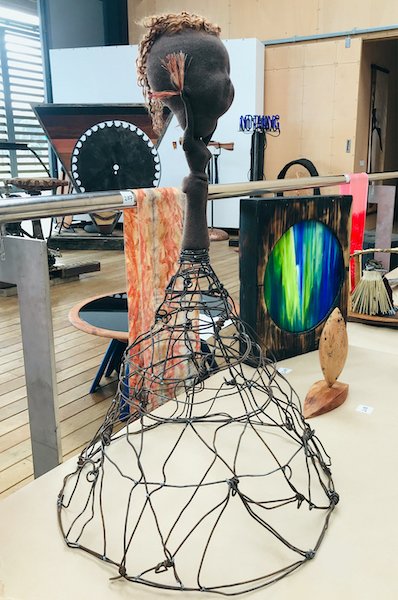
I named the piece “Structural Change” and submitted it to auction with my name and the sisters, Amy Lynch & Katie Baptiste. In writing this blog post, I now realize that there were many others that contributed, not to mention other moments in time and place that influenced the work. That right there is the heart of Collab for me; the process of making as a means of exchanging and acknowledging just how intertwined we are.
It did, however, become obvious that I needed to take this figure home from the auction and that the base unfortunately wasn’t going to make the fit for my luggage. That metal base awaits in the resource container, from where I had pulled the barbie-doll, like a game of exquisite corpse to be responded to and repurposed at Collab NZ 2025. The exchange will continue as the goal of $70,000, the seed money for the next event, was achieved!
